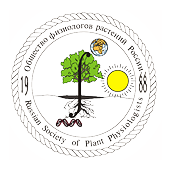Новости науки и практики // Сентябрь 2024

Groundbreaking studies provide key insights into chloroplasts protein import motor
The chloroplast protein import motor plays a pivotal role in biogenesis and homeostasis by driving the translocation of preproteins into chloroplasts.
https://www.eurekalert.org/news-releases/1055636
Regulation of hair cell and stomatal size by a hair cell-specific peroxidase in the grass Brachypodium distachyon
Nunes et al. identified a role for BdPRX76/BdPOX, a class III peroxidase, in regulating hair cell and stomatal size in the model grass Brachypodium distachyon. In bdpox mutants, prickle hair cells were smaller and stomata were longer.
https://www.cell.com/current-biology/fulltext/S0960-9822(23)00447-5
Probing plant signal processing optogenetically by two channelrhodopsins
Ding et al. used light-gated ion channels (channelrhodopsins), to study the basis for encoding of specificity in plant signal processing. They developed a genetically engineered channelrhodopsin variant called XXM 2.0 with high Ca2+ conductance that enabled triggering cytosolic Ca2+ elevations in planta.
https://www.nature.com/articles/s41586-024-07884-1
Largest protein yet discovered builds algal toxins
While seeking to unravel how marine algae create their chemically complex toxins, scientists at UC San Diego's Scripps Institution of Oceanography have discovered the largest protein yet identified in biology.
https://phys.org/news/2024-08-largest-protein-algal-toxins.html
Can a nitrogen-fixing organelle be engineered within plants?
Given that crop yields are strongly limited by nitrogen, engineering crop plants with self-nitrogen-fertilization capacity holds great promise for sustainable agriculture. Recently, a nitrogen-fixing organelle has been characterized in the unicellular marine microalgae Braarudosphaera bigelowii. Engineering a nitrogen-fixing organelle into the non–nitrogen-fixing crops could benefit both environmental sustainability and global food security.
https://www.cell.com/trends/plant-science/fulltext/S1360-1385(24)00177-8
Thriving in a salty future: morpho-anatomical, physiological, and molecular adaptations to salt stress in alfalfa (Medicago sativa L.) and other crops
This review first summarizes the general effects of salinity on plants and the broad-ranging mechanisms for dealing with salt-induced osmotic stress, ion toxicity, and secondary stress. Secondly, we address defensive and adaptive strategies that have been described for alfalfa, such as the plasticity of alfalfa’s root system, hormonal crosstalk for maintaining ion homeostasis, spatiotemporal specialized metabolite profiles, and the protection of alfalfa-rhizobia associations.
https://academic.oup.com/aob/advance-article/doi/10.1093/aob/mcae152/7746500
Centromere drive may propel the evolution of chromosome and genome size in plants
Scientists propose a model which in a single framework helps explain the stability of chromosome size in symmetric lineages (bryophytes, lycophytes, and ferns) and its variability in asymmetric lineages (gymnosperms and angiosperms), providing a foundation for future research in plant genome evolution.
https://academic.oup.com/aob/advance-article/doi/10.1093/aob/mcae149/7743260
Widespread horizontal gene transfer between plants and bacteria
Haimlich et al hypothesized that the spatial vicinity and the long-term relationships between plants and their microbiota may promote cross-kingdom horizontal gene transfer (HGT), a phenomenon that is relatively rare in nature. To test this hypothesis, they analyzed the Arabidopsis thaliana genome and its extensively sequenced microbiome to detect events of horizontal transfer of full-length genes that transferred between plants and bacteria.
https://academic.oup.com/ismecommun/article/4/1/ycae073/7671050
Dynamic soil hydraulic resistance regulates stomata
Manandhar et al investigate the dynamic patterns of leaf ABA levels, plant hydraulic conductance and the point of failure in the soil–plant conductance in the highly embolism-resistant species Callitris tuberculata using continuous dendrometer measurements of leaf water potential during drought.
https://nph.onlinelibrary.wiley.com/doi/10.1111/nph.20020
Researchers discover optimum twilight time for plant growth
A team of researchers has gained insight into the genetic processes underpinning how plants detect twilight and the role twilight plays in plant growth.
https://phys.org/news/2024-08-optimum-twilight-growth.html
How plants become bushy, or not: New study sheds light on hormone that controls branching
For many plants, more branches means more fruit. But what causes a plant to grow branches? New research from the University of California, Davis shows how plants break down the hormone strigolactone, which suppresses branching, to become more "bushy." Understanding how strigolactone is regulated could have big implications for many crop plants.
https://www.nature.com/articles/s41467-024-50928-3
3D laser printing with bioinks from microalgae
Microalgae such as the diatom Odontella aurita and the green alga Tetraselmis striata are especially suitable as "biofactories" for the production of sustainable materials for 3D laser printing due to their high content in lipids and photoactive pigments.
https://onlinelibrary.wiley.com/doi/10.1002/adma.202402786
The «tea-molecular shield»: How plants combat drought through protein phosphorylation
Drought stress poses a significant challenge to agriculture, causing substantial yield losses in many crops. Tea plants, known for their rich flavonoid content which enhances both quality and health benefits, are particularly affected. Under drought conditions, the production of these valuable compounds declines, impacting the overall quality of tea.
https://academic.oup.com/hr/article/11/7/uhae136/7686813
Plant signaling pathways decoded using 'optogenetic' tobacco plants
Using newly generated "optogenetic" tobacco plants, research teams have investigated how plants process external signals.
https://www.sciencedaily.com/releases/2024/08/240828155037.htm
CeO₂ nanoparticles: A double-edged sword for aquatic algal life
A new study reveals significant alterations in growth, photosynthetic activity, and gene expression of freshwater algae due to cerium oxide nanoparticles. This research highlights the complex interactions between these microscopic particles.
https://phys.org/news/2024-08-ceo-nanoparticles-edged-sword-aquatic.html
Новости
Новости науки и практики // Ноябрь 2024
Обзор научных новостей, опубликованных во всемирной паутине за последний месяцНовости науки и практики // Октябрь 2024
Обзор научных новостей, опубликованных во всемирной паутине за последний месяцСобрание (ассамблея) научных обществ
МГУ, 11-13 октября 2024 г.


Объявления
Записей не найдено.



